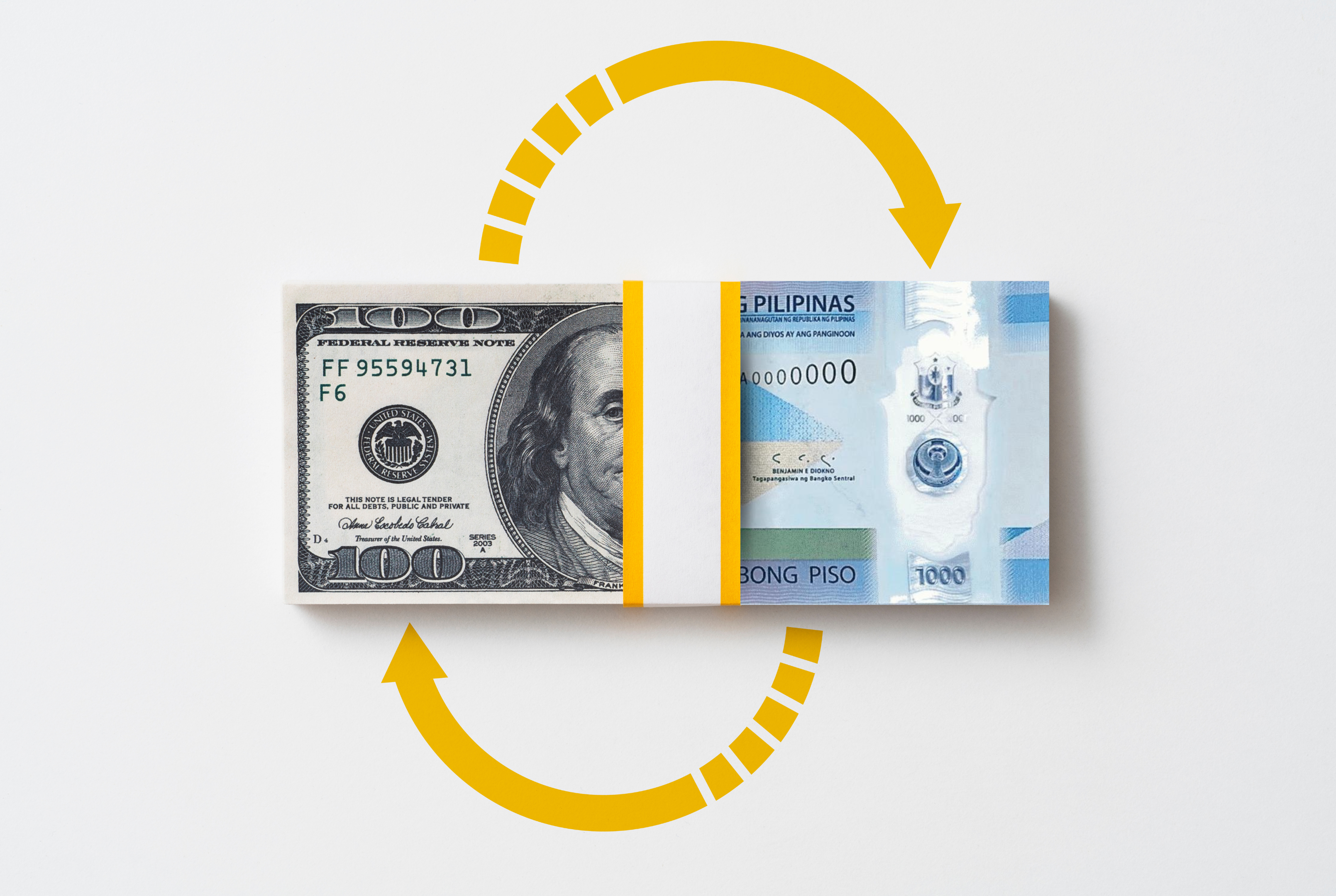Supercharged dollar sinks peso below 58
MANILA — The Philippine peso on Tuesday sank to the 58-per-dollar level, a territory it had not seen in almost two years as expectations of a delayed rate cut in the United States supercharge the greenback.
The local currency closed at 58.27 against the dollar, 37 centavos weaker than its previous day’s finish of 57.9.
This was the peso’s worst closing since Nov. 8, 2022, when it finished at 58.275. The local unit’s worst showing on Tuesday stood at 58.28-per-dollar.
In a statement, BSP Governor Eli Remolona Jr. said the peso’s weakness yesterday was “in line with other currencies in the region” after the US Federal Reserve signaled a delay in cutting interest rates despite the slightly softer April inflation stateside.
READ: Peso slides to 58 to $1
But the BSP chief vowed to defend the local unit from too much volatility that can stoke inflation.
“The BSP continues to monitor the foreign exchange market but allows the market to function without aiming to protect a certain exchange rate,” Remolona said.
Nonetheless, the BSP will participate in the market when necessary to smoothen excessive volatility and restore order during periods of stress,” he added.
Sharp depreciation
The BSP can intervene in the foreign exchange market by selling some dollars from its reserves to ease any sharp depreciation of the peso. In an interview with Bloomberg last week, Remolona said the BSP has “ample reserves” to prop up the local unit in case it sharply falls.
READ: ‘Forceful’ BSP defense seen if peso slides to 58:$1
This, as Remolona also expects the BSP to cut interest rates in August ahead of the Fed, which he had forecast to start easing in September. The central bank chief said he’s not worried about such a move’s impact on the peso, which may come under pressure if local yields become less attractive to capital inflows while interest rates are still high elsewhere.
Strong fundamentals
For Robert Dan Roces, an economist at Security Bank, the BSP has enough space to loosen monetary policy ahead of the Fed as inflation at home remains within the government’s 2 to 4 percent target range.
“This view may be based on factors such as the Philippines’ strong economic fundamentals, that the peso’s current depreciation may be just temporary, adequate foreign exchange reserves, and the potential for the rate cut to stimulate domestic growth and attract foreign investment in the longer term,” Roces said.
“However, cutting rates before the Fed does carry some risks, particularly in terms of the potential impact on the Philippine peso. When a central bank lowers interest rates while other major central banks maintain higher rates, it can make the currency less attractive to foreign investors seeking higher yields,” he added. INQ

